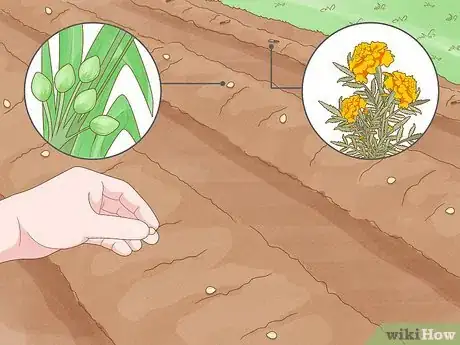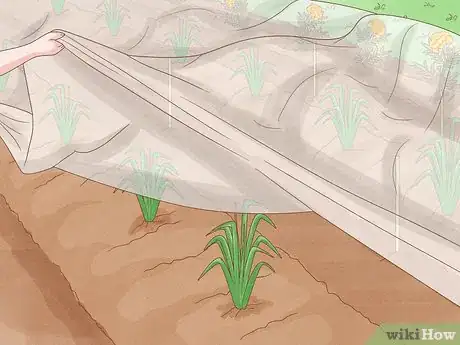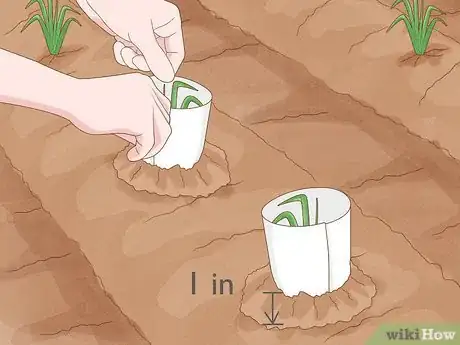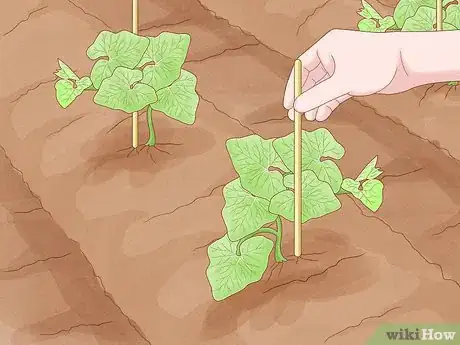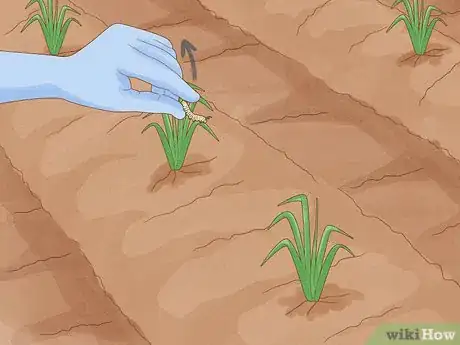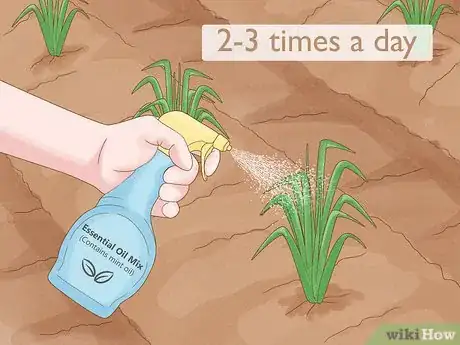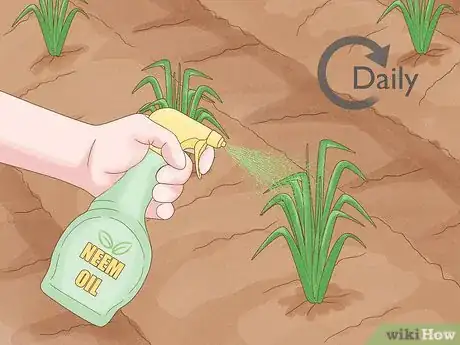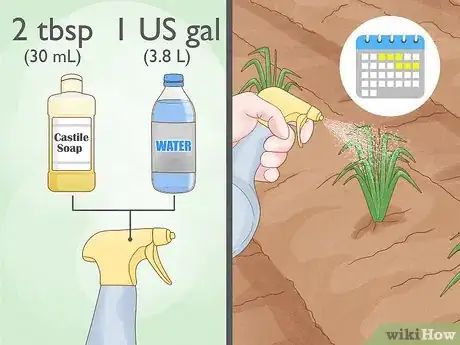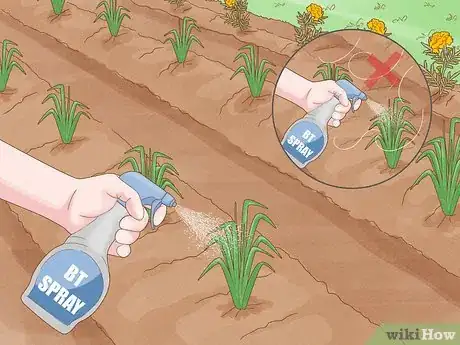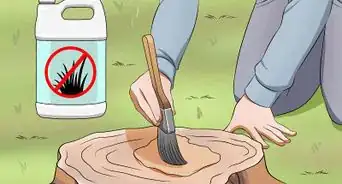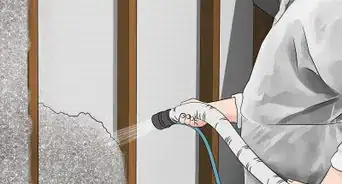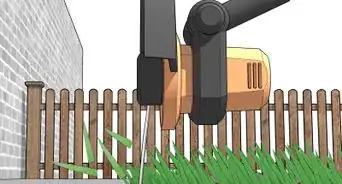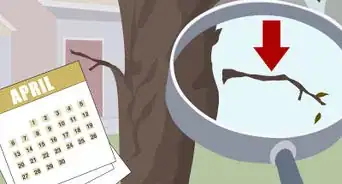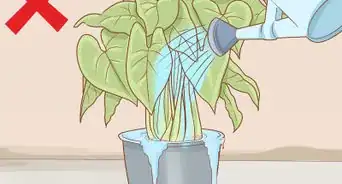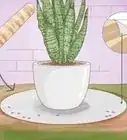This article was co-authored by Melinda Meservy and by wikiHow staff writer, Hannah Madden. Melinda Meservy is a Plant Specialist and the Owner of Thyme and Place, a botanical boutique offering plants and gifts in Salt Lake City, Utah. Before starting her own business, Melinda worked in process and business improvement and data analytics. Melinda earned a BA in History from the University of Utah, is trained in lean and agile methodologies, and completed her Certified Professional Facilitator certification. Thyme and Place offers indoor plants and containers, a fully stocked potting bench, and tips on plants to suit your space and lifestyle.
There are 12 references cited in this article, which can be found at the bottom of the page.
This article has been viewed 13,388 times.
If you’ve noticed that your leaves keep getting munched on or your vegetables have little nibbles on them, you might be dealing with garden insects. While it’s tough to protect your garden completely from nature, there are steps you can take to limit the amount of insects in your area and keep your crops safe. Try using a few of these methods in conjunction with each other to stop bugs from enjoying your delicious garden.
Steps
Expert Q&A
-
QuestionHow do you get rid of bugs on plants naturally?
 Melinda MeservyMelinda Meservy is a Plant Specialist and the Owner of Thyme and Place, a botanical boutique offering plants and gifts in Salt Lake City, Utah. Before starting her own business, Melinda worked in process and business improvement and data analytics. Melinda earned a BA in History from the University of Utah, is trained in lean and agile methodologies, and completed her Certified Professional Facilitator certification. Thyme and Place offers indoor plants and containers, a fully stocked potting bench, and tips on plants to suit your space and lifestyle.
Melinda MeservyMelinda Meservy is a Plant Specialist and the Owner of Thyme and Place, a botanical boutique offering plants and gifts in Salt Lake City, Utah. Before starting her own business, Melinda worked in process and business improvement and data analytics. Melinda earned a BA in History from the University of Utah, is trained in lean and agile methodologies, and completed her Certified Professional Facilitator certification. Thyme and Place offers indoor plants and containers, a fully stocked potting bench, and tips on plants to suit your space and lifestyle.
Plant Specialist The easiest way to get rid of bugs on your plants is to simply spray your plants with water. The stream of water will remove the pest without harming your plant.
The easiest way to get rid of bugs on your plants is to simply spray your plants with water. The stream of water will remove the pest without harming your plant.
References
- ↑ http://blogs.ifas.ufl.edu/pinellasco/2013/09/16/managing-pests-in-the-vegetable-garden/
- ↑ https://vtnews.vt.edu/articles/2016/03/outreach-naturalgardentips.html
- ↑ https://www.peta.org/living/humane-home/natural-harmless-alternatives-garden-pesticides/
- ↑ https://extension.umn.edu/product-and-houseplant-pests/insects-indoor-plants
- ↑ https://agrilifeextension.tamu.edu/library/gardening/fertilizing/
- ↑ http://blogs.ifas.ufl.edu/pinellasco/2013/09/16/managing-pests-in-the-vegetable-garden/
- ↑ http://blogs.ifas.ufl.edu/pinellasco/2013/09/16/managing-pests-in-the-vegetable-garden/
- ↑ https://vtnews.vt.edu/articles/2016/03/outreach-naturalgardentips.html
- ↑ https://www.canr.msu.edu/news/protecting_early_spring_vegetables_in_your_garden
- ↑ https://vtnews.vt.edu/articles/2016/03/outreach-naturalgardentips.html
- ↑ http://blogs.ifas.ufl.edu/pinellasco/2013/09/16/managing-pests-in-the-vegetable-garden/
- ↑ Melinda Meservy. Plant Specialist. Expert Interview. 18 August 2020.
- ↑ https://www.aces.edu/blog/topics/vegetables-lawn-garden/vegetable-garden-insects/
- ↑ https://www.youtube.com/watch?v=P1SjjTFRJhg&t=81s
- ↑ http://npic.orst.edu/factsheets/neemgen.html
- ↑ https://harvesttotable.com/insecticidal-soaps-to-control-insect-pests/
- ↑ http://npic.orst.edu/factsheets/btgen.html
- ↑ http://blogs.ifas.ufl.edu/pinellasco/2013/09/16/managing-pests-in-the-vegetable-garden/

